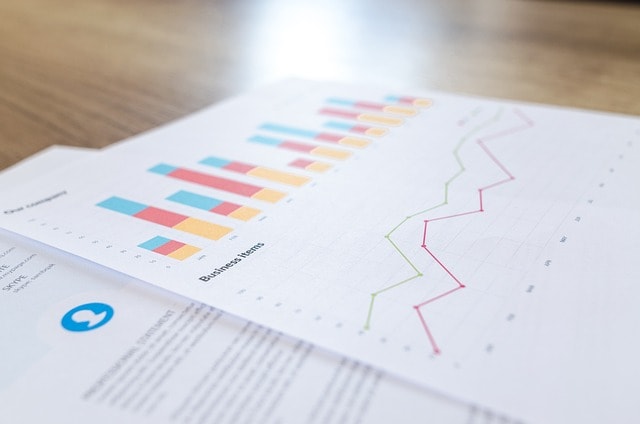What is a Balance Sheet?
A balance sheet is a financial statement that provides an overview of a company’s financial position at a specific point in time. It shows the company’s assets, liabilities, and shareholders’ equity.
Assets are what the company owns, such as cash, inventory, and property. Liabilities are what the company owes, such as loans and accounts payable. Shareholders’ equity represents the company’s net worth or the difference between assets and liabilities.
The balance sheet is essential for investors, creditors, and management to assess a company’s financial health and make informed decisions. It helps analyze the company’s liquidity, solvency, and overall financial stability.
Balance Sheet Pros & Cons
Pros:
- Provides a snapshot of a company’s financial position at a specific point in time.
- Helps investors and stakeholders assess the financial health of a company.
- Shows a company’s assets, liabilities, and equity in an organized manner.
- Can be used to track changes in a company’s financial position over time.
Cons:
- May not capture the true market value of assets and liabilities.
- Relies on historical cost rather than current market value for some items.
- Limited in scope and may not provide a complete picture of a company’s financial health.
- Requires proper interpretation and analysis to be useful.
What goes on a Balance Sheet?
The balance sheet contains information on a company’s liabilities, assets, and equity. Here’s what you can typically find on the balance sheet.
Current Liabilities
Current liabilities on a balance sheet are obligations or debts due within one year. Investors and analysts should closely monitor current liabilities, as they can impact a company’s liquidity and financial health.
Examples of current liabilities include:
- Accounts payable.
- Short-term loans.
- Accrued expenses.
- Income taxes payable.
- Current portion of long-term debt.
Long-Term Liabilities
Long-term or non-current liabilities on the balance sheet are obligations that are due beyond one year from the date of the balance sheet. Investors and analysts should carefully assess these liabilities, as they can significantly impact a company’s financial health and sustainability in the long run.
Examples of long-term liabilities include:
- Bonds payable.
- Long-term loans.
- Pension liabilities.
- Lease obligations.
- Deferred tax liabilities.
- Depreciation on equipment or other fixed assets.
Current Assets
Current assets on a balance sheet are assets that are expected to be converted into cash within one year. They are essential for assessing a company’s liquidity and ability to meet short-term obligations.
Examples of current assets include:
- Cash.
- Accounts receivable.
- Inventory.
- Prepaid expenses.
- Marketable securities.
Long-Term Assets
Long-term assets are not expected to be converted into cash within one year and are crucial for the long-term growth and sustainability of the business. Proper management and valuation of long-term assets are essential for accurately reflecting the company’s financial health.
Examples of long-term assets include:
- Property, plant, and equipment.
- Intangible assets (intellectual property, software, patents, etc.).
- Investments in subsidiaries or affiliates.
- Goodwill.
- Long-term investments.
Shareholder’s Equity
Shareholder’s equity on a balance sheet represents the amount of the company’s assets that belong to its shareholders after all liabilities have been deducted. It is calculated by subtracting total liabilities from total assets and is an essential indicator of a company’s financial health and stability.
Shareholder’s equity can also be called net assets or book value. Retained earnings are typically added to shareholder’s equity.
What’s an Income Statement?
An income statement, also called a profit and loss statement or P&L statement, is a crucial financial statement that provides a snapshot of a company’s profitability over a specific period. It details the revenue earned, expenses incurred, and resulting net income or loss.
The income statement typically covers a defined timeframe, such as a quarter or a year, allowing stakeholders to assess the company’s financial performance. It reveals how much money the business made after deducting all costs associated with generating that revenue. It’s common for businesses to produce quarterly and annual income statements.
This statement includes various sections, such as revenue, cost of goods sold, gross profit, operating expenses, and net income. Stakeholders use this information to analyze the company’s ability to generate profits and manage expenses effectively.
Key metrics like gross profit margin and net profit margin are calculated using income statement data, giving insights into the company’s operational efficiency and profitability.
Income Statement Pros & Cons
Pros:
- Provides a clear overview of a company’s financial performance.
- Helps in analyzing revenue, expenses, and profitability.
- Essential for investors, creditors, and other stakeholders to make informed decisions.
- Can highlight trends and patterns in financial data.
- Allows for comparisons with previous periods or industry standards.
Cons:
- Subject to manipulation or misrepresentation by companies.
- May not capture the total financial health of a company.
- Can be complex and difficult for non-financial individuals to interpret.
- Limited in scope and does not provide a complete picture of a company’s operations.
- Historical in nature and may not reflect future performance.
What goes on an Income Statement?
The income statement summarizes gross revenue and expenses and then deducts expenses from revenue to determine profit. Here are the critical components of the income statement.
Gross Revenue (The Top Line)
Gross revenue is listed on the top line of an income statement and refers to the total sales revenue generated by a company before any deductions for expenses. It represents the initial money from selling goods or services, providing a snapshot of the company’s top-line performance. Gross revenue is a vital indicator of a company’s ability to generate income and is often used to calculate critical financial ratios.
Cost of Goods Sold
Cost of Goods Sold (COGS) represents the direct costs of producing goods or services that a company sells. These costs typically include materials, labor, and overhead expenses directly related to production.
Gross Profit
Gross profit on an income statement is calculated by subtracting the cost of goods sold from total revenue. It represents a company’s profit from its core business activities before deducting other expenses. A higher gross profit margin indicates that a company effectively manages its production costs and pricing strategies.
Operating Expenses
Operating expenses on an income statement represent the costs incurred by a company in its day-to-day operations. These expenses include salaries, rent, utilities, and marketing costs. Monitoring and controlling operating expenses is crucial for maintaining profitability and financial health.
Operating Income
Operating income, also known as operating profit, is a key financial metric representing the profit a company generates from its core business operations. It is calculated by subtracting operating expenses from gross income and excluding non-operating items such as interest and taxes. Operating income provides insight into how efficiently a company manages its day-to-day operations to generate profits.
Other Income and Expenses
Other income and expenses on an income statement typically include interest income, gains or losses from investments, and miscellaneous expenses. These figures are essential for understanding a company’s overall financial performance beyond its operating activities. Additionally, business taxes are often included as a separate line item to show their impact on the company’s bottom line.
Net Income (The Bottom Line)
Net profit, or net income, is listed on the bottom line of an income statement as the amount left over after deducting all expenses from total revenue. It represents a company’s overall profitability and is often used as a critical indicator of financial health. A positive net profit indicates that the company generates more revenue than expenses, while a negative net profit suggests the company is losing money. A positive net income is considered in the black, while a negative net income is considered in the red.
What are the crucial differences between a Balance Sheet vs Income Statement?
When comparing a balance sheet to an income statement, it is essential to understand that these two financial statements serve different purposes and provide distinct insights into a company’s financial health. The balance sheet provides a snapshot of a company’s financial position at a specific point in time, showing its assets, liabilities, and equity. On the other hand, the income statement focuses on the company’s financial performance over a specific period, detailing its revenues, expenses, and net income.
One crucial difference between the two is their respective timelines. While the balance sheet provides a static view of the company’s financial position at a particular moment, the income statement offers a dynamic view of its financial performance over a specific period, typically a quarter or a year.
Another key distinction is in the information they convey. The balance sheet shows what a company owns (assets) and owes (liabilities) at a given time, along with the shareholders’ equity. In contrast, the income statement reveals how much revenue the company generated, the expenses incurred in generating that revenue, and the resulting net income or loss.
Overall, while the balance sheet offers a snapshot of a company’s financial health at a specific point in time, the income statement provides insights into its financial performance over a period. Both are essential tools for investors, creditors, and analysts to assess a company’s overall financial well-being.
Frequently Asked Questions
Here are the most common questions about the balance sheet vs income statement.
How are Balance Sheets and Income Statements similar?
Balance sheets and income statements are essential financial documents that provide insight into a company’s financial health. They reflect the company’s financial position at a specific time and help stakeholders understand its performance.
Additionally, investors, creditors, and analysts use both documents to evaluate the company’s profitability and financial stability. Balance sheets and income statements work together to give a comprehensive view of a company’s financial status.
How do small businesses use the Balance Sheet?
Small businesses use the balance sheet to accurately assess their financial health. This document offers insights into assets, liabilities, and equity at a specific time, aiding informed decision-making. By calculating financial ratios, like debt-to-equity, businesses evaluate performance and stability.
Comparing multiple balance sheets over time helps track progress, identify trends, and pinpoint areas for improvement. Accounting software streamlines financial management, ensuring accurate and efficient reporting processes.
How do small businesses use the Income Statement?
Small businesses utilize the income statement to track their financial performance over a specific period, usually monthly, quarterly, or annually. This statement provides a snapshot of the company’s revenues, expenses, and profits.
Income statements help small businesses assess their profitability by comparing revenue against expenses. Businesses can make informed decisions to improve their financial health by analyzing this data.
One crucial aspect for small businesses is understanding their net income, which represents the amount left after deducting all expenses from total revenue. Analyzing trends in revenue and expenses highlighted in the income statement allows small businesses to adjust their strategies for better financial outcomes.
Can I use accounting software to produce Balance Sheets and Income Statements?
Accounting software can help small business owners produce balance sheets and income statements efficiently and accurately. These software programs often have templates and automated features that streamline the process of inputting financial data and generating financial statements. This can save time and reduce the likelihood of errors in the financial reporting process for small business owners.
Is the Income Statement or Balance Sheet more important for Business Loans?
Many lenders will review the income statement and balance sheet when reviewing business loan applications. Both financial statements are crucial indicators of a company’s financial health, which helps lenders decide if lending money to the business is a good investment.
In addition, many lenders will also look at your cash flow statement to determine your capacity for repaying the loan. These financial statements are crucial, but their importance could vary depending on the type of loan you’re seeking.
Cash Flow Financing: When lenders consider issuing a loan based on a company’s cash flow, the income and cash flow statements tend to weigh more heavily than a balance sheet.
Asset-Based Lending (ABL): ABL refers to business loans based on the value of a company’s assets. ABL lenders may weigh the balance more heavily than the income statement on this type of loan.
Revenue-Based Lending: Some business loans and alternative funding products, like a merchant cash advance, base approval and loan amounts on a company’s revenue. Income statements and sales records may be weighed more heavily when accessing these products.
Balance Sheet vs Income Statement – Final Thoughts
While the balance sheet and income statement are essential for assessing a company’s financial health, they serve different purposes. The balance sheet provides a snapshot of the company’s financial position at a specific point in time, while the income statement shows its performance over a set period. By analyzing both documents together, investors and stakeholders can understand a company’s overall financial status.
Contact us if you have more questions about financial statements or want to apply for a small business loan. Our alternative financing experts can help you find the best funding options for your small business needs.



















